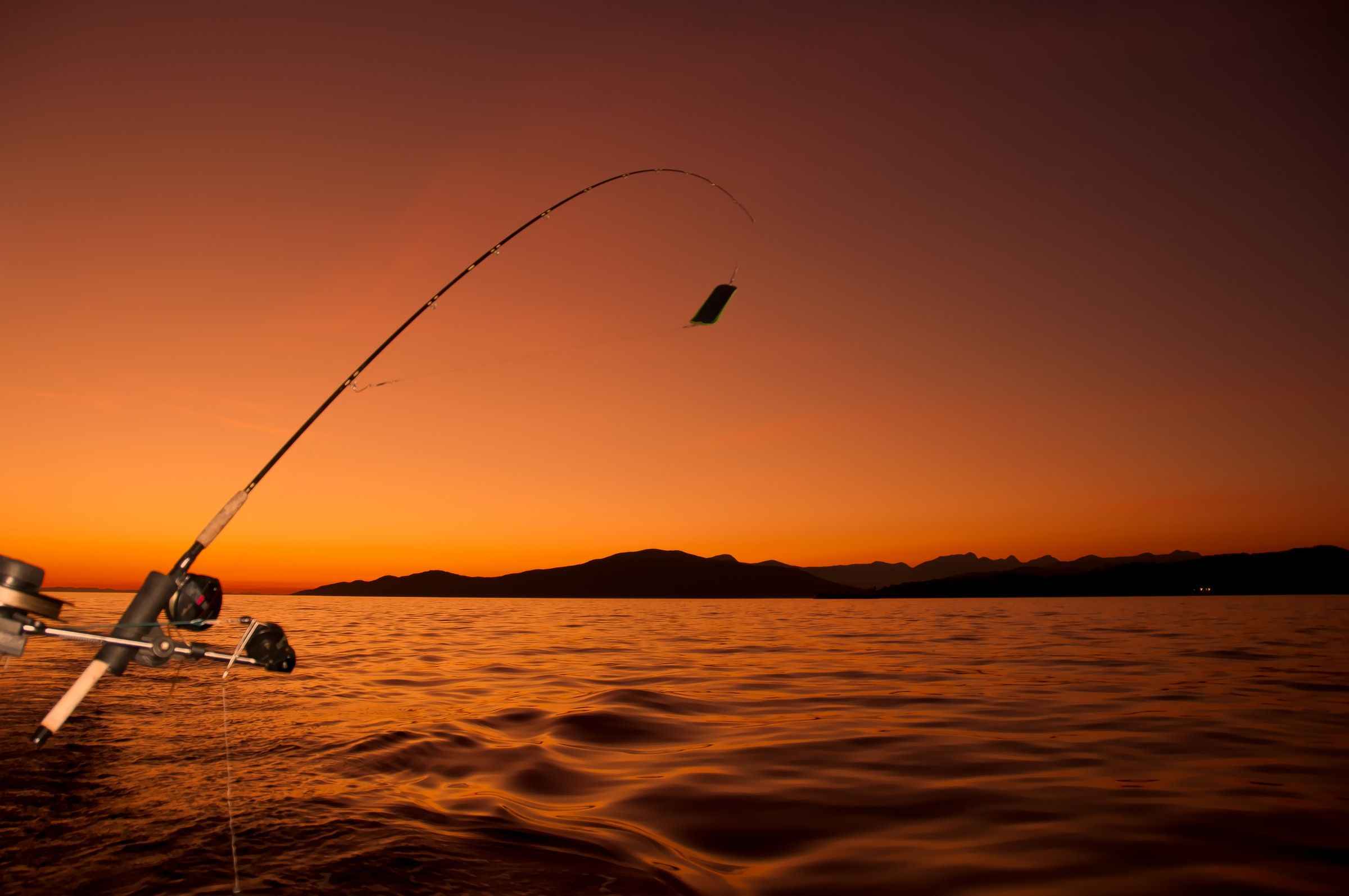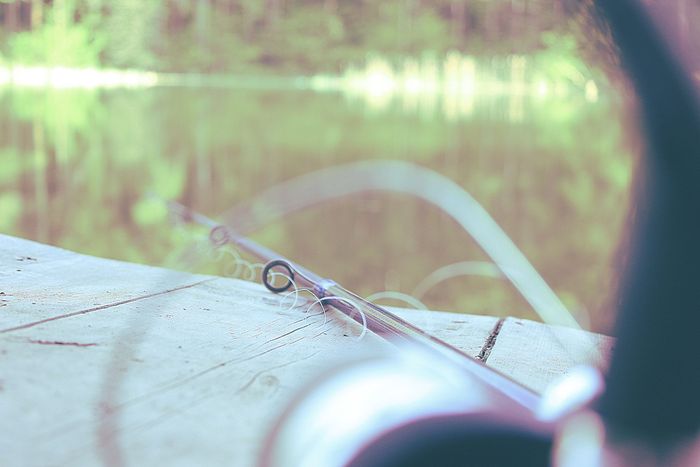Worm and Jig Variations for Big Bass
Catching big bass is a real challenge, but learning worm and jig variations will help you land those bass in no time.

Catching big bass may not seem like an easy feat, but with the proper rig and techniques, they can be easy pickings for any angler.
There are a countless number of customized rigs out there, and more are quite possibly being fashioned as we speak. Instead of going through them all, we chose our favorite worm and jig variations for big bass to help you get started snagging those trophies.
Worms
The Standard Ned Rig
The Ned Rig, named after its inventor Ned Kehde, is one of the most popular “underground” worm rigs used for bass. This unassuming and drab-looking rig has inevitably changed the game of finesse fishing and looks like it's here to stay.

The main part of the Ned Rig is the jig head, which is sometimes called the Ned head as well. Unlike most traditional jigs, it has a flat bottom with the line tied at a right angle to the hook shaft that causes the bait to stand when it’s being pulled along the waterbed. You can use any plastic worm or lure that you prefer as long as the Ned head is rigged up correctly.
In its most basic setup, the Ned Rig works well when the bites are slow or when cold weather slows down the fish to a crawl. It’s ideal to cast beneath docks or rocky structures and is effective for waking up sleepy fish that are lazily resting on the bottom.
The Ned Rig is sneaky because they target big bass that are feeding on wounded baitfish sinking toward the bottom. Casting toward a recent feeding frenzy likewise helps this rig blend in well with the chaos.
Now, if you’re looking for bass around weed lines, reeds, or other forms of cover, modifying the Ned Rig to be weedless by attaching it to a shaky head can help you get into those thickly covered areas. Some trial and error may be needed to get the jig weight just right though.
The Texas Rig
This is one of the simplest worm rigs to make and utilize because it can be used in any type of environment. It’s already weedless in its basic form because the hook’s point is hidden in the body of the worm. You can even opt to remove the bullet weight to make it weightless as well. To create the basic Texas rig, simply put the hook through the worm’s “nose”, let it run through until the hook’s eyelet, and reverse it so it points toward the worm’s body. Afterward, put in the hook point and thread it again towards the worm’s body.
A popular variation is the Pegged Texas Rig, which basically involves adding a rubber bobber stopper or similar object to pin the weight back to the top of the hook. It’s usually best to peg this rig when fishing in deep, heavy cover or structures because the rig is compact and prevents the weight from sliding up the line. Some anglers even add beads between the hook and the bullet weight to create clacking sounds that bass are attracted to, which is most effective in murky waters.

The Carolina Rig

In the past, this rig is often associated with catching more bass than it is about the size of the fish. However, recent variations by anglers may have changed the way this rig works today.
One variation, the Carolina Slider Weight rig, uses a cylindrical slip sinker instead of a bullet weight that allows it to cut through structure and cover easily. Anglers often prefer the Carolina Rig when they need to make long casts in deep cover, and it can likewise help your plastic worm get down to the bottom quicker where those big bass are resting.
The Wacky Rig
A wacky rig is basically a plastic worm with a hook inserted perpendicularly through the middle and many anglers are curious as to why this simple setup works so well. However, because its rudimentary setup is beautifully plain, anglers couldn't resist customizing it to fit their needs, resulting in many variations.
One popular modification is a worm that’s wacky rigged onto a dropshot. This setup gives the bait a wobbling action that big bass seem to find irresistible. It’s best used when you need a little help reaching fish in the deeper parts of the water column or when the fish just aren’t biting.
Another popular variation is the Neko Rig, commonly known as a nail weighted wacky rig. It’s basically a weightless wacky rig with a nail weight in the worm’s head, with some anglers even referring to it as a souped-up shaky head. What happens is that the wacky rig keeps the head and tail shaking but the nail weight forces the nose to tilt to the bottom. If your line is nice and tight, it will even cause your worm to stand up as well.
Swim and Flipping Jigs
The standard jig is quite versatile and is a must-have in any angler’s arsenal of tricks. It can be used in virtually any way possible, is effective at any depth, and can work itself through different types of structure and cover. Moreover, a jig’s characteristics or details can be customized in a pinch to fit any possible situation. This has led to anglers eventually creating their own types of jigs to quickly adapt to any possible instance.
The swim jig is meant to cut through cover and timber, although it can handle open water as well. The only downside to this jig is as the name applies, you need to make it swim, meaning you can’t drag it. It’s best to wiggle the rod tip slightly on the retrieve.
Flipping jigs on the other hand are more popular with bass, and there are many variations in its design. This is usually because of the different forms of cover that anglers encounter and flip through. This type of jig is usually best for docks, shoreline grass, and deeper grass beds.
A flipping jig's rate of falling is essential to its effectivity – you can easily adjust this by swapping out jigheads, modifying the thickness and length of the skirt, and the style of the trailer. Making this rig more compressed causes it to sink faster and if you want it to slow down, keep the skirt at full length. Moreover, make sure to use a thicker hook with a large barb as it's an effective way of horsing big bass from thick cover.
Change is Good
There is a reason why standard rigs have become "standard" in the first place – because they're simple and they work. However, a "standard" is usually a jack-of-all-trades, so it's not uncommon to see modifications to a rudimentary design to fit a specific situation.
With that said, we hope our picks of the best worm and jig variations will help you land that big bass.




